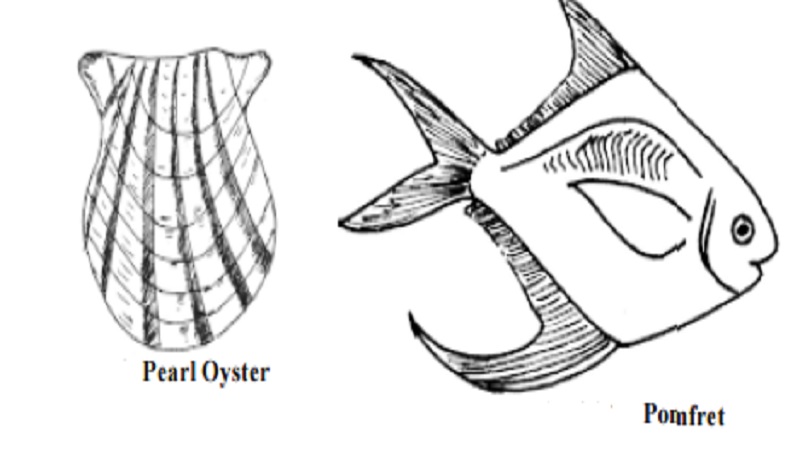Chapter: BIOLOGY (ZOOLOGY) Standard XI first year 11th text book Assignment topics question and answer Explanation Definition
Pearl Oyster

Pearl Oyster
Pearls are one of the rarest and highly esteemed gems. Pearls are produced by the pearl oysters of the genus Pinctada under class Bivalvia. From the point of view of pearl production in Indian waters, the most important species is P.fucata. It has a wide distribution in the Persian Gulf, Red sea, Gulf of Kutch, Gulf of Mannar and the Palk Bay. The oysters occur on ridges of rock or dead coral in the Gulf of Mannar along both coasts of India and Sri Lanka. These formations are known as 'pearl banks' or 'paars'. They extend from Cape comorin to Rameshwaram Island. Heavy production had been recorded in Tuticorin.
From each pearl oyster bed thousands of oysters are taken out. Every oyster contains a pearl. Most of the pearls obtained are too small. Some of them are large, perfectly round with fine lustre fetching high prices. Hence it is worthwhile farming oysters and induce pearl formation. In recent years India has succeeded in developing farming techniques for the production of cultured pearls of good shape and lustre.
The CMFRI in India gives necessary training in pearl culture tech-niques. In this process shell beads are introduced into the soft tissues of the oyster along with a strip of the mantle so that the latter may secrete the pearly substance around the bead. The treated oysters are well taken care of in cages suspended from floating rafts in shallow waters of the sea. Thus, cul-tured pearls are produced in the same way as the natural pearls. The pearl is a concretion of calcium carbonate in an organic matrix. It is like the nacreous layer secreted by the mantle on the inner surface of the shell valve.
Shells having a brilliant silvery sheen are known in commerce as the 'mother of pearl'. They are collected for the manufacture of buttons and other fancy articles.
Beneficial animals
The animals contributing to our economy and welfare are known as beneficial animals. Many animals provide us with nutritious food like meat and milk, clothing materials like silk and wool and the luxurious items like pearls and corals. The silk worms, the honey bees, the lac insects, fowls, fishes, prawns and crabs belong to this category.
ECONOMIC ZOOLOGY
Since time immemorial, human beings have used animals for food and other purposes. While some animals are very useful to mankind certain others cause loss to the economy of man. Though every organisms has its own im-portance in nature, some of them such as a few mammals, birds, fishes, prawns and insects have become valuable. Some pests are competitors of human be-ings for natural resources and food. Thus a study of economically important animals will always be useful.
Related Topics